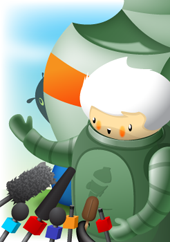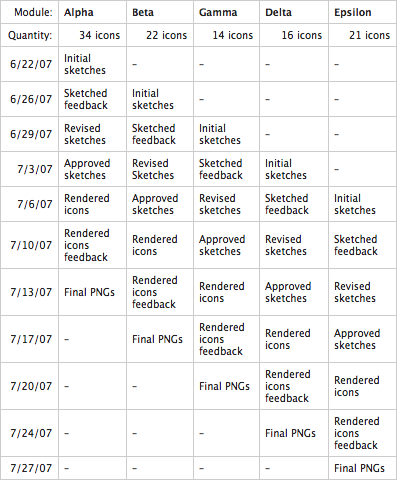Yegor Gilyov: "Everything you wanted to know about Turbomilk, but hesitate to ask"

Yegor Gilev ( yegorg ) - director of the studio of visual interface design TurboMilk . How did it happen that a company with a strange name appeared in central Russia that draws icons for clients all over the world? In an interview Yegor reveals the secrets of organizing the work of the studio.
Why do you do icons and interfaces? After all, you all started as website designers?
Icons are easier to deal with in isolation from the rest of the development stages. And this work is better appreciated. Having realized the difficulties of developing turnkey solutions (for example, full-fledged sites with an engine and support), we chose the most pleasant of all outsourcing niches. But interfaces are a natural way of growth from this niche.
')
Website developers are often forced to work with non-professional clients. And we, as outsourcers, more often communicate with professionals. We have three large groups of clients: design studios, software developers, and usability professionals. Communicating with these people is usually easier than with an average client who just needs a website.
Do you have Russian customers?
Yes. 30% of our customers are in Russia, 40% speak Russian.
What is the difference between working with foreign customers and working with Russians (except the language barrier)?
All clients are very different, and it is difficult to distinguish any national peculiarities. Is that ... a slightly different attitude to the documents. In Russia, they either agree simply in words, or they write contracts on 50 pages, 10 times verified by lawyers. Abroad it is simpler: they roll a piece of paper on their knees and consider this an official document.
Do you provide the customer with several design options (several versions of one icon, several options of one interface screen) to choose from?
Not usually. We consider this a flawed practice. We are doing one option, trying to fully embody our understanding of the correct solution of this problem. Then we finish by remarks. If necessary, we redo it completely.
Are the interfaces you design doing testing? If so, how? Who is testing (you or the customer)?
If you mean usability testing, then only when we work together with usability experts . They are testing. Sometimes a prototype is tested before the start of our work, sometimes a finished product.
How is the division of labor on the project ?
We have a small team. And, although we do our best to ensure that our clients do not perceive the team as a fire brigade, sometimes we still try to go forward and solve the assigned ASAP tasks. And for this we have to be interchangeable.
How is specialization taken into account when assigning tasks to a project? Do you have technical designers, illustrators in your team? Does this have a positive or negative effect on the result?
There is a great technical designer - Olesya. There is a crazy illustrator - Eugene. Of course, specialization is taken into account, as without it. Can it have a negative impact on the result? The interchangeability of which I have spoken above may have a negative effect.
Setting the task from the client and agreeing on the scope of work and deadlines - how do you do this?
First, we estimate the time (in hours) required to complete the work. According to the experience of previous projects (for several years we have been trying to keep a complete record of working time). From the estimate of time, the price and the deadline (including the load on other projects) goes by itself.
The question of the analysis of the task. For example, about the icons. If you are told: “we want 25 icons,” and they give you a list, what are they for - are you analyzing the need for icons, are you suggesting more options, can you even suggest reconsidering a set of actions?
Such an analysis of the problem is possible with a long-known client, with whom we understand each other well. In such cases - yes, it happens, we make our proposals. But if just a person came from the street and ordered 25 icons, we draw without talking.
At what stages do you share the work on the project?
Depends on the project. For icons:
- selection of metaphors and development of visual language (sketches);
- style development on the example of several icons;
- drawing the entire set;
- generation of output files.
How is work planning done?
Not very formal yet. We are moving to a better organization with the help of the TimeLog system.
Here is an example of a plan agreed with the client:

Just without a fool. This client is a rare exception. He treats his Mistons as responsibly as ours, and is very worried when he cannot provide feedback on time.
How is quality control performed?
We have a special person for this - Dmitry Zhukov. Without his approval, no pixel is shown to the client. And he is absolutely deaf to the pleas "but Dima, because the client has been waiting for a long time, let's show it now and then finalize it!"
Source: https://habr.com/ru/post/15654/
All Articles